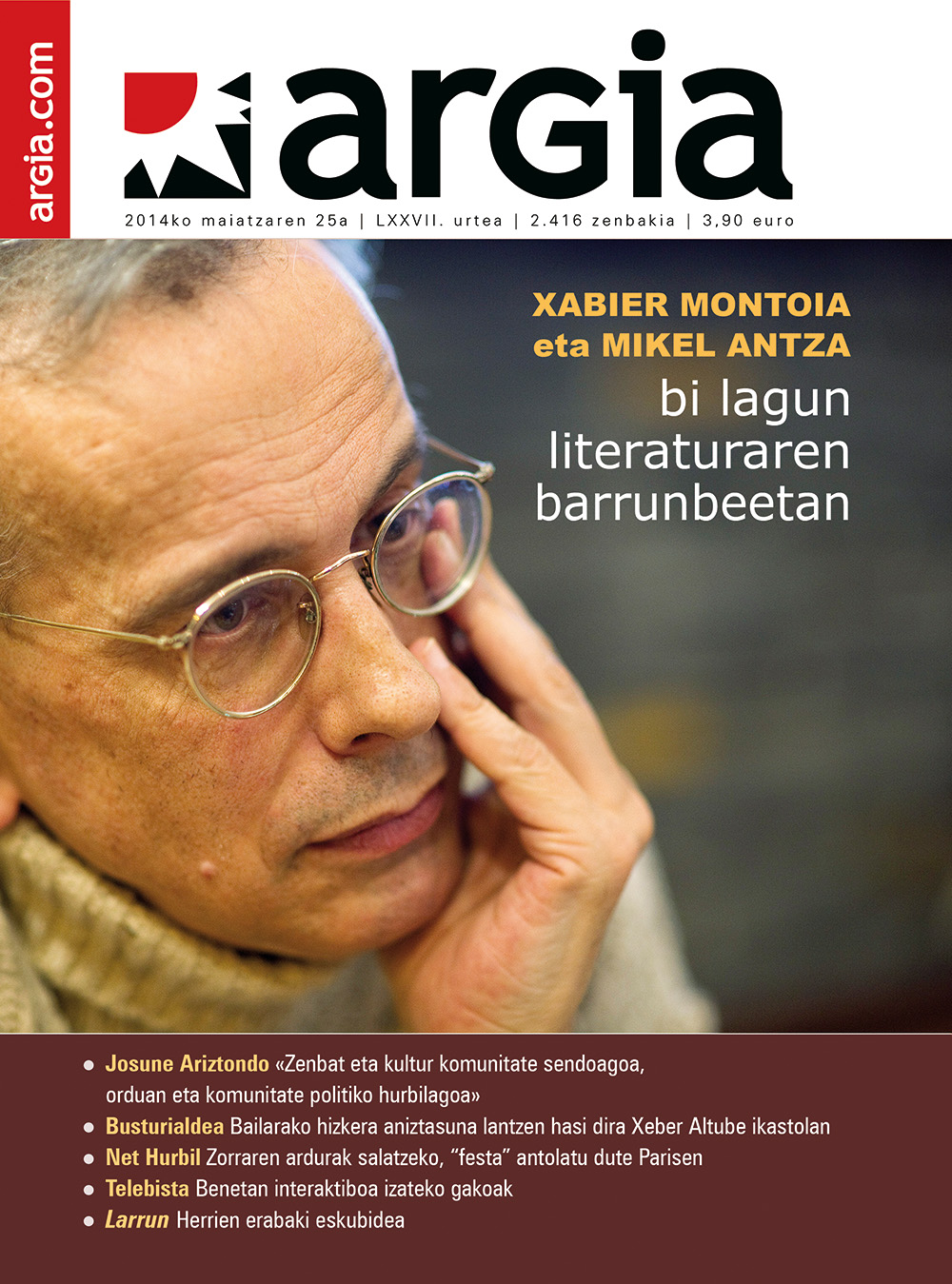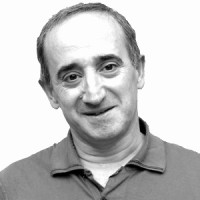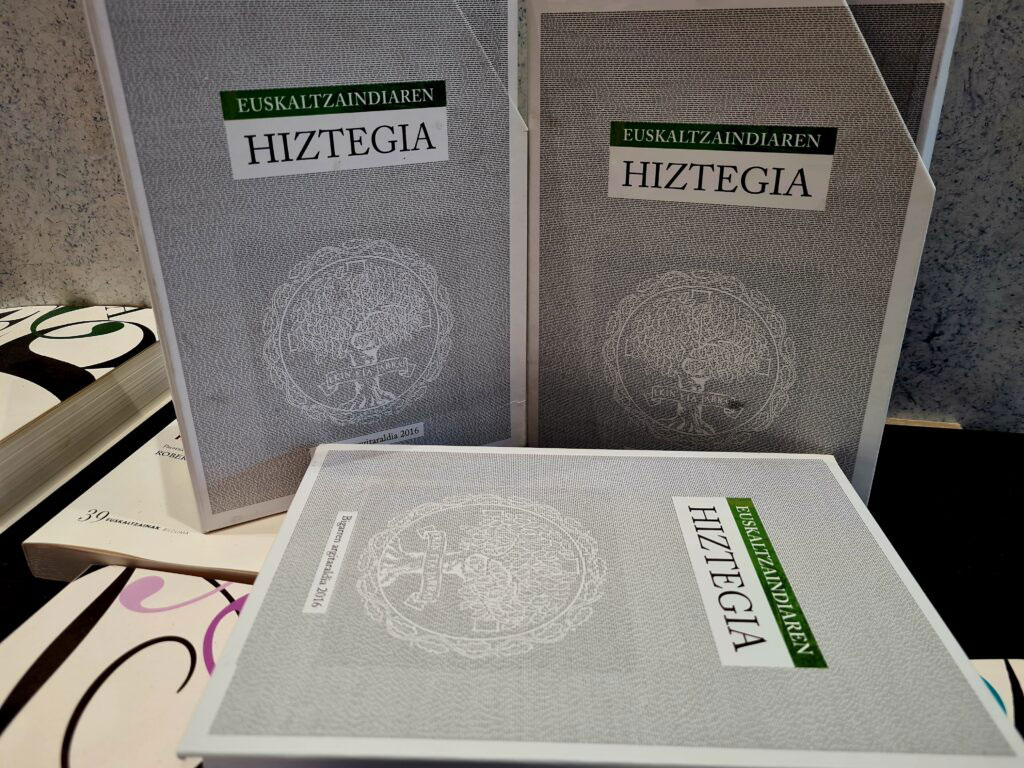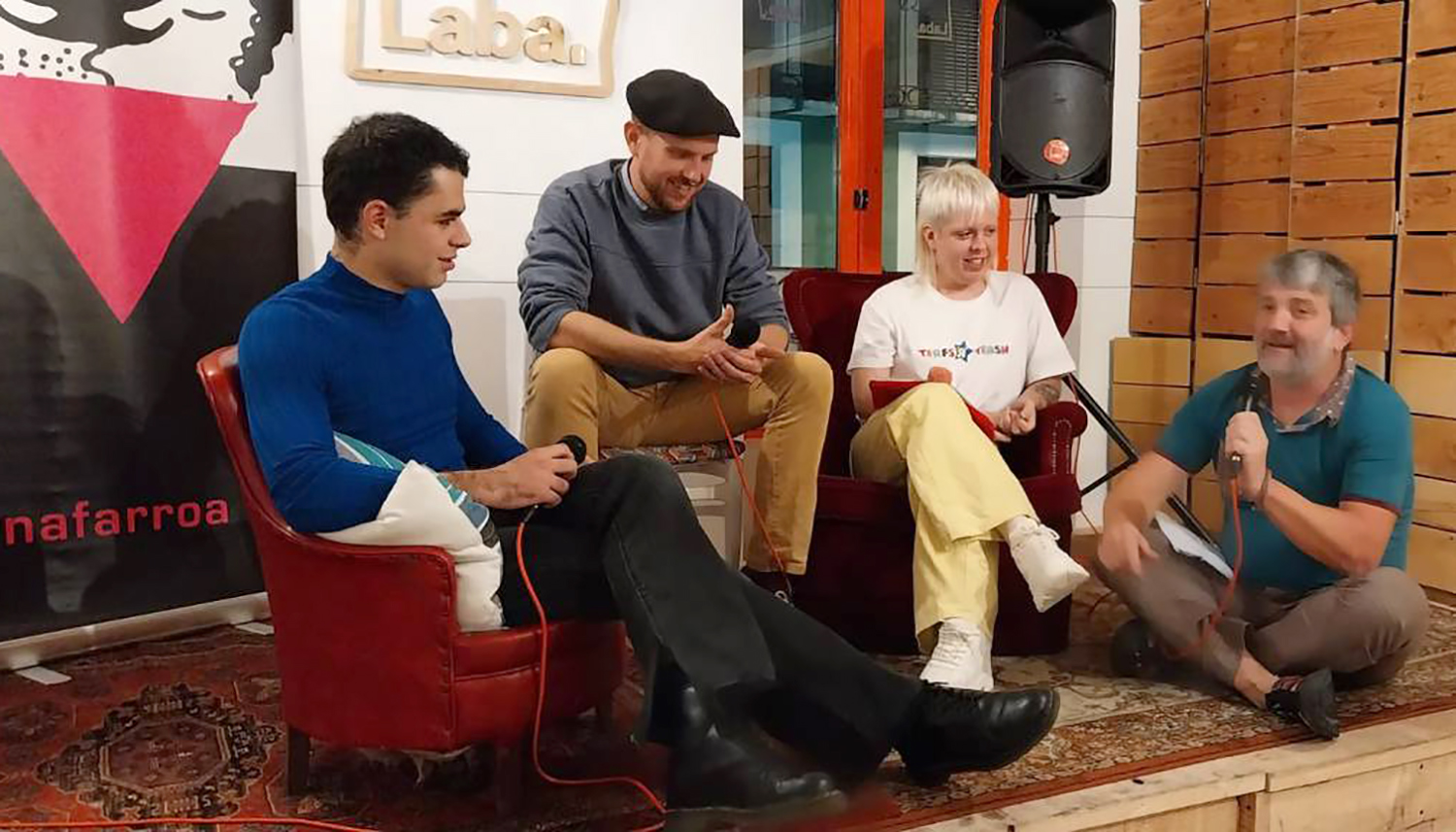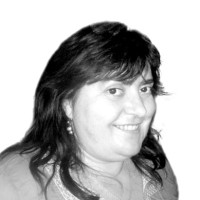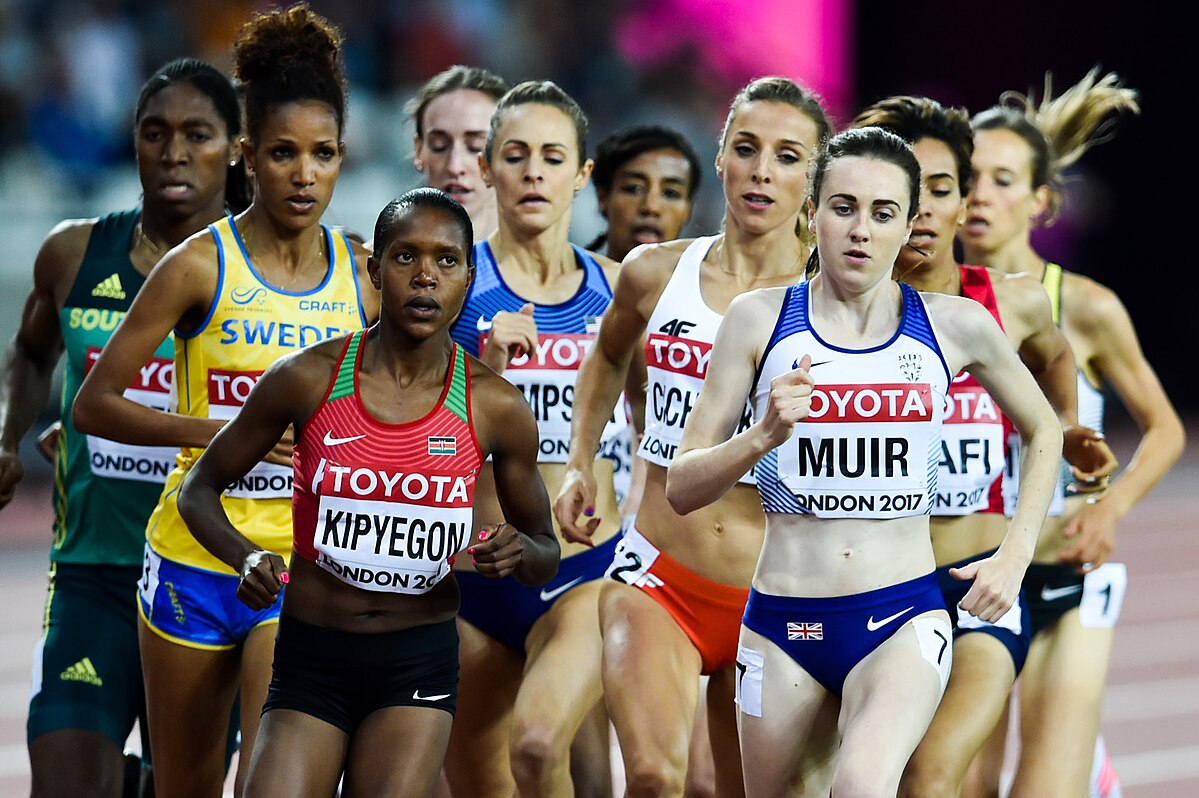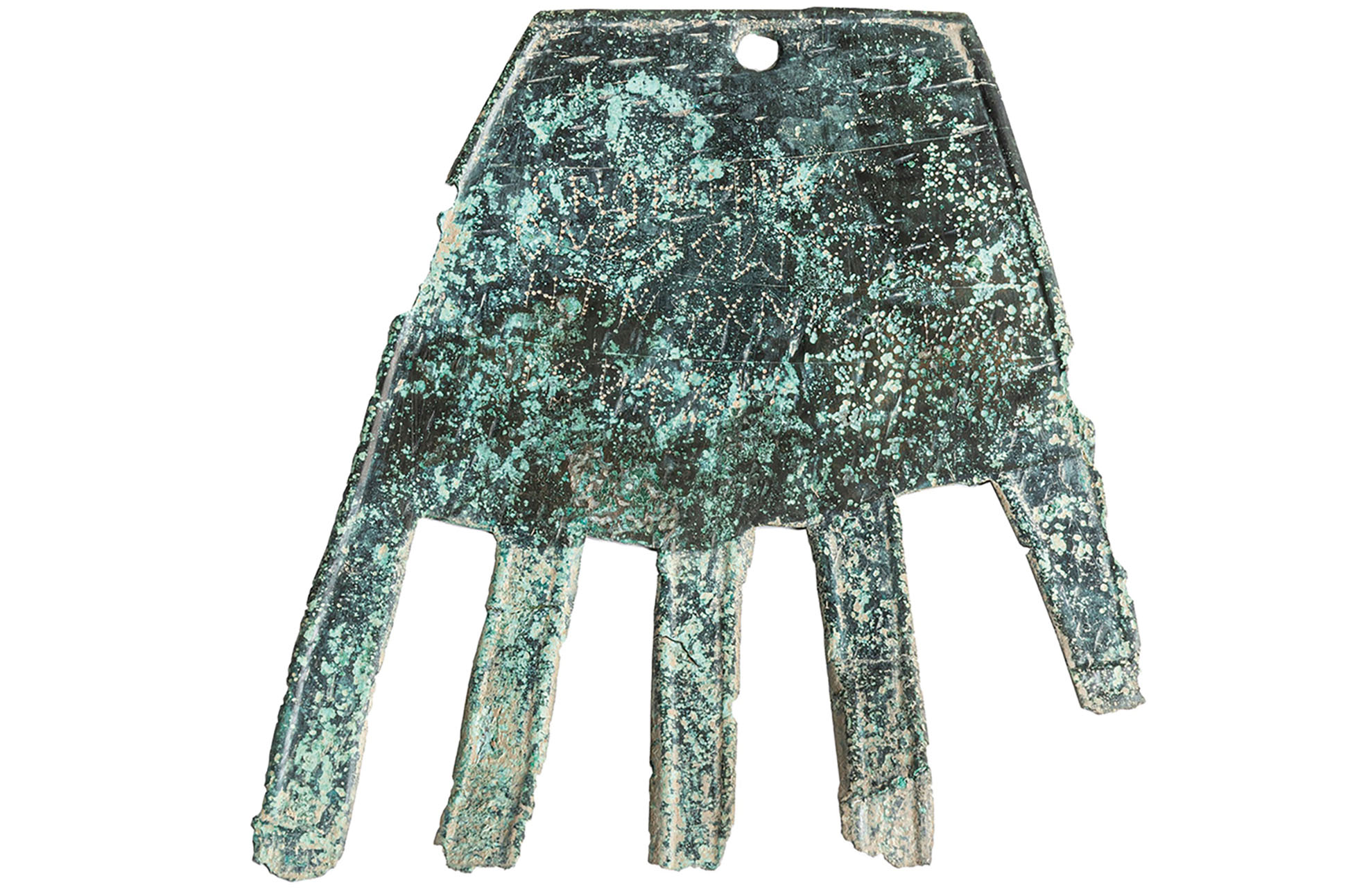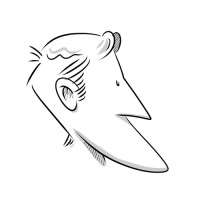All Busturialdea's words in the same classroom
- Let the tour not only be for Gernika, but for the whole region. Said and done. The Ikastola Seber Altube of Gernika-Lumo has organised the Bihozfera Ikastola festival for June 1, but Busturialdea will join in the Euskararen Bihozfera initiative: The natural biosphere of Urdaibai and the Basque biosphere of Busturialdea. Because the diversity, the natural space and the dialects of 20 villages in the region are characteristic of both.
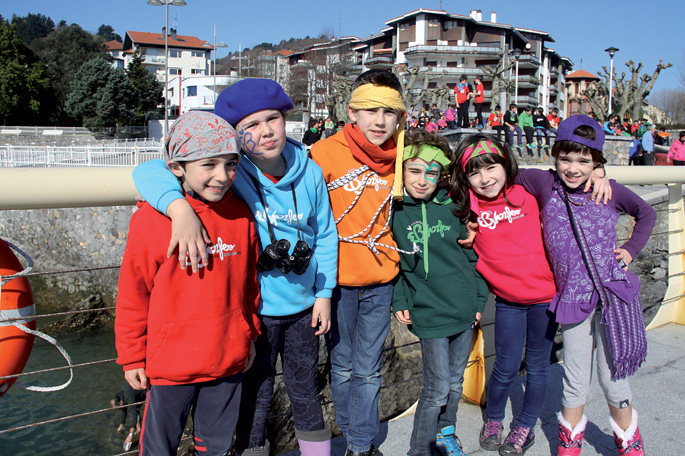
Inside the western dialect is the subdialect of the center in Busturialdea, but from one town to another many variants are joined and almost all can be heard in the ikastola Seber Altube. In fact, except for those of Bermeo, in the ikastola of Gernika-Lumo they are learning boys and girls from all over the region. “Everyone brings their own olorous Euskera, but they are often unaware of what they bring,” says the Euskera professor at ikastola Jon Andoni Uriarte. “Asked how they say ‘go’ in Spanish, one from Ibarrangelu tells you ‘go’, without realizing that at home they say ‘yun’,” the professor sets us as an example. Although they own Euskalki, the use of the standard Euskera makes the dialect cease to be so and this has been noticed in boys and girls. “When they come to the ikastola they tecnificate. Her Euskera is homogenized, not only by the influence of the school or the standard, but by the tendency to do what they hear the most among them,” says Uriarte and the director of the ikastola, Roberto Arteagabeitia. Therefore, with the excuse of Ibilaldia, they have launched a tool to work in the classrooms the diversity of the Basque country in Busturialdea. In paper format on the one hand and on the web on the other. Students from 5 and 6 years of Primary Education and 1 and 2 years of Compulsory Secondary Education will have the opportunity to work their dialect in 4-5 sessions. The project aims to disseminate the richness of the language and to raise awareness of the importance of the language. To this end, they have carried out several practical exercises, with the help of the EUDIA Research Group of the UPV/EHU to analyze the Basque Country Variation. They themselves have been in charge of synthesizing the material for teachers. They have elaborated a guide with the main characteristics of the Basque country in the region, with the objective of identifying the most relevant variants of each locality.
In fact, through the questions that the students will ask their elders, the teachers will have to perform various exercises and help them in it. From the very beginning they considered it important to complete the material for the faculty, “since not all the teachers are experts in it and we have considered it important to prepare a theoretical summary or a guide for the faculty, highlighting the characteristics that distinguish the people”, they explained. However, the 54 professors who work at Seber Altube “we own Euskalki, although one says ‘va’, another ‘due’ and the third ‘doie’,” says Arteagabeitia.
Gernika to Busturialdea
Of the 600 students who study at ikastola Seber Altube, 150 are from outside Gernika, from the rest of the region. With this in mind, they have thought that the didactic material to work with the diversity of the Basque Country in the classrooms of Busturialdea cannot be limited to Seber Altube and have made the project much more ambitious: to extend it to the other schools of the town and to other schools throughout the region. It is estimated that in the whole region, at these levels, (5-6 EP and 1-2 ESO), about 1,400-1,500 students work. Therefore, they have contacted all the municipalities of the region to present the project to them and ask for their support. Additional work to the preparations for the walk. But they're at ease in Seber Altube. “We have been very welcoming in all municipalities and we hope that the other centers will also use it,” explains the director of the ikastola.
This diversity also makes the project promoters optimistic. “The students are very close to a relative from more than one town in the region. It is difficult for the two parents to be from Gernika, so it will be very easy to find informants and each class will have no problem in searching for those from different towns in the region”, the Basque professor proudly tells us.
On 29 May, the project will be presented in the Madariaga Tower of Busturia, where 500 paper copies will be extracted and the website will also be launched on that day. The students will have the opportunity to network interviews, videos and the collection of Basque dialects in the region, with the help of the faculty. From that date, all schools in the region will be offered the possibility to participate in the project, that is, to use the elaborated material, and to include examples of local dialects in the place where they are incorporated into the web. “It’s been just as public, private, concerted. We want the linguistic diversity of Busturialdea to be as broad as possible,” we have been recognized by Seber Altube.
The project has a budget of EUR 13,000 and from there, if we add more money, the project would lengthen, broadening its dissemination in paper format and holding talks or sessions in each place.
Ariane Ensunza Aldamizetxebarriak (Gernika-Lumo, 1988) Gernikako euskararen ezaugarri fonetikoak aztertu zituen lehenengo eta Busturialdekoekin ari da gaur egun, tesia egiten. Bera ibili da, Leire Gandarias eta Lorea Unamunorekin batera, EUDIA ikerketa taldean, Busturialdeko euskararen dibertsitatea ikasgeletan jorratzeko tresnaren prestaketan, Seber Altube ikastolak eskatuta.
Zuk zeuk gernikarrez egiten duzu?
Bai, baina ama ereñarra daukat, beraz, gauzatxo batzuk igartzen ditut handik hartutakoak direla. Gernikan asko gara guraso biak gernikarrak ez ditugunak eta horrek ere eragin du herriko euskalkian. Sekulako nahasketa, dibertsitate eta aldakortasuna dago Gernikako euskaran.
Non daude Busturialdeko herrien arteko desberdintasunik handienak?
Hortxe ditugu Bermeo eta Elantxobe, biek ere kostako hizkera dute eta, esaterako, Gernikako edo Muxikako euskararekin konparatuz gero oso desberdinak dira; beti ere, bi mutur horiek aztertuz gero. Baina Gernika eta Ereño ikertuta, akaso, desberdintasuna ez da hain nabarmena, distantzia handia izan arren herri bien artean. Mendialdean, esaterako, gehiago kontserbatu dute euren euskalkia, baina gazteen artean, mugikortasuna handiagoa izanik, hasi dira ez egiten euren aitita-amonena.
Zure ikerketari dagokionez, bina informatzaile erabili dituzu.
55 urtetik gorako informatzaileak eta euskara batuan alfabetatu eta mundu ‘berrian’ bizi diren gazteak, hau da, herri batetik bestera mugitzen direnak. Gazteok herriko euskara mantendu duten edo norantz aldatu duten aztertzea zen helburua, beraz, gazteenen kasuan beste herrietako hizkerekin hartu-emanak izan dituzten informatzaileak aukeratu ditut.
Gazte horiek euren hizkera estimuan daukate?
Badira herri txikiago batzuk sen handiagoa dutenak, nortasun sendoagoa dutenak eta kontziente direnak horixe dela euren berba egiteko modua. Beste herri askok Gernikako euskararantz jo dute. Kontuan izan Gernikakoa dela euskara batutik hurbiltsuen dagoena. Esaterako, ‘-o’ amaiera orokortuago dute, hau da, batuan ere hitz asko horrela esaten direnez, amaiera hori orokortu dute eta ‘-ue’ amaiera baztertu dute. Adibidez: astue (astoa), lepue (lepoa), karamelue (karameloa), due (doa). Belaunaldien artean bertako euskara gehien mantendu dutenak Elantxobe eta Ereño direla esango nuke.
Periferian biak ere.
Bai, eta bertako gazteak asko mugitzen diren arren, haiek eutsi diote gehien eurenari. Foruko eta Kortezubiko hizkerak, esaterako, Gernikan egiten denetik gertuen daudenak dira.
Master amaierako lanean Gernikako euskararen aldakortasuna aztertu zenuen. Zer nolako aldaerak identifikatu zenituen?
Bustiduraren inguruko ikerketa egin nuen, euskara batuaren eraginez zelan galtzen ari den bustiduraren eragina. [‘Goixien’, ‘aretxa’, ‘gatxa’; ‘goizien’, ‘aretza’, ‘gatza’ beharrean edo ‘ixen’, ‘badakixu’; ‘izen’ eta ‘badakizu’ beharrean]. Esaten da Busturialdeakoa zubi-hizkera dela, sartaldeko eta sortaldeko euskararen artekoa. Gura nuen ikusi zer duen batetik eta zer bestetik.
Eta asmatu duzu?
Errekaren banaketaren isla baino gehiago, ipar eta hegoaren arteko desberdintasuna ematen da hemen. Busturialdean ardatz bi dago: errekarena eta ipar-hegoarena. Batzuetan banaketa horizontala da, hau da, iparraldea (kosta) eta hegoaldea (barrualdekoa) eta beste batzuetan da errekaren eskumatara eta ezkerretara; biosferaren erreserbaren argazkia, alegia.
Zein da aldaerarik nabarmenena, batzuen eta besteen artean?
Berba amaieretan, artikulua gehitueran, bustidura –itturrixe (iturria), eztixe (eztia), azerixe (azeria)–; eta aditz morfologian, erabiltzen diren markatzaileak. Azken batean, denean ematen dira aldaerak. Baina, bereizketa nagusia belaunaldiz belaunaldikoa da. Lehen Busturiak harreman handiagoa zuen Bermeorekin, eta orain berriz, Gernikarekin.
Busturialdeko euskara ezagutzen ez duenari zelakoa dela esango zenioke?
‘-ie’ amaiera egiten dugu asko, ‘etxie’, ‘farolie’... bai euskal berbetan zein maileguetan. Arratian ‘-ea’ egiten da eta Lea Artibain ‘-ia’. Aldaera hori ez da aldatu euskara batuaren eraginez, edo belaunaldien arteko aldaketen ondorioz. Hala ere, egia da herri batzuetan lehen ‘-i’ egiten zela eta galtzen dabiltzala, ‘etxi’ esan ordez ‘etxie’ esaten hasi dira.
Seber Altube ikastolaren proiektuaren helburuetako bat umeek etxetik dakarten euskara prestigiatzea da.
Bai, batua sartu da eskolan zuzen-zuzenean eta umeek euskalkia baztertzen dute. Kontua ez da euskalkia baino ez egitea, baizik eta bertako hizkerari prestigioa ematea, ezaugarri asko galdu baititu. Ikas dezatela testuinguru bakoitzean erabili behar den erregistroa aukeratzen.
Euskara batua aipatu duzu aldaketen arrazoi legez. Beste zerk eragin ditu aldaketak herritarren hizkeretan?
Indar garrantzitsuenak euskara batua eta alfabetizazioa izan dira. Gernikako euskararen kasuan, esaterako, kontsonante epentetikoa galtzen hasi da: meri(x)enda, bih(x)otza… Belaunaldi gazteenen eta helduaroan euskaldundu direnen artean antzeman dut.
Is it important to use a language correctly? To what extent is it so necessary to master grammar or to have a broad vocabulary? I’ve always heard the importance of language, but after thinking about it, I came to a conclusion. Thinking often involves this; reaching some... [+]
Ansorena´tar Joseba Eneko.
Edonori orto zer den galdetuz gero, goizaldea erantzungo, D´Artagnanen mosketero laguna edo ipurtzuloa, agian. Baina orto- aurrizkiak zuzen adierazten du eta maiz erabiltzen dugu: ortodoxia, ortopedia, ortodontzia... Orduan (datorrena... [+]
We are seeing more and more spelling errors in the writings of social networks, not only of young people, but also of the media. Some have become so common that they hardly hurt their eyes.
In this way, we can read in Spanish many things like: "You lose a dog," "It'll be that or k... [+]
Euskaltzaindia's motto is "ekin eta jarrai" ("ekin eta jarrai"), the outlawing of Euskaltzaindia. I don't know why the Academy wasn't outlawed, all three words appeared on its logo. The allegations have been made with less - and (those of one age remember the cassette of The Mondragon... [+]
Euskararen biziberritzea Ipar Euskal Herrian jardunaldia antolatzen du ostiral honetan Baionan Euskaltzaindiak. Euskararen alde egiten dena eta ez dena eztabaidatzeko mementoa izango da. Eragileak eta politikariak bilduko dira egun osoan.
In a one-hour commute to the workplace, I am accompanied by the car radio. On yesterday's journey, I had the opportunity to enjoy a short story program, as the last port of the road, full of curves, began in Karrantza. Short legends, yes, of few words, but stories of great... [+]









